SUNDAY JOINT, 1-12-2025: DREAMING BIG WITH ACE COOL

Hey All,
The last last three Joints are all offshoots from "Kaena Point: the Big-Wave Break that Got Away," which I noodled on for months and finally posted last week. Tarzan Smith began his hallucinatory 90-mile marathon Oahu–Kauai paddle from the tip of Kaena. Jim Neece staked and lost his big-wave career on the Kaena Challenge. Ace Cool, today's subject, also took up the Challenge, but eventually swapped the location from Kaena to Outside Log Cabins and thus brought the Kaena chapter in surf history to a close. Although who knows, there are still colossal waves to be ridden out there where souls of the newly-dead are beamed into the spirit world—or, if found wanting, are left to wander the empty and rocky coast for eternity. eating spiders and waiting for a kindly sea turtle to swim up and give them a second shot at the next realm—and if Alo Slebir flies in to ride a 125-footer at Kaena this weekend while I'm grinding through the New Yorker Beginner-Friendly crossword puzzle, I will be surprised, but not shocked.
So, Ace Cool. The last and loudest Kaena Point hopeful. Born Alec Cooke to a family descended from missionary-turned-Big-Five-titan Amos Cooke (not a blood relation; Alec was conceived with the assistance of an athletic Ivy League sperm-donor), he began surfing young and developed into a modestly talented but immensely brave rider of big waves. SURFER introduced Cooke to its readers in 1983 as "Ace Cool," a self-awarded name meant to juice his part-time gig as an FM radio surf reporter. Big-wave riding had not quite yet bounced back from its post-1969 low, and with a few exceptions the crew who rode big Waimea were bearded roughnecks in the James Coburn mode, content to ride their clear 10' 0" triple-stringer Brewer guns with little fanfare or discussion or attention. Cooke went hard in the other direction. As SURFER said, "You can either handle Ace or you can't, as with anyone having no beliefs or restraints on modesty," and never mind that the sentence is upside-down—Cooke not only had a restraint on modesty, he tied it to a chair and pushed it off the Haleiwa Bridge—the point was Ace Cool talked a lot and wanted all the attention we had to give.
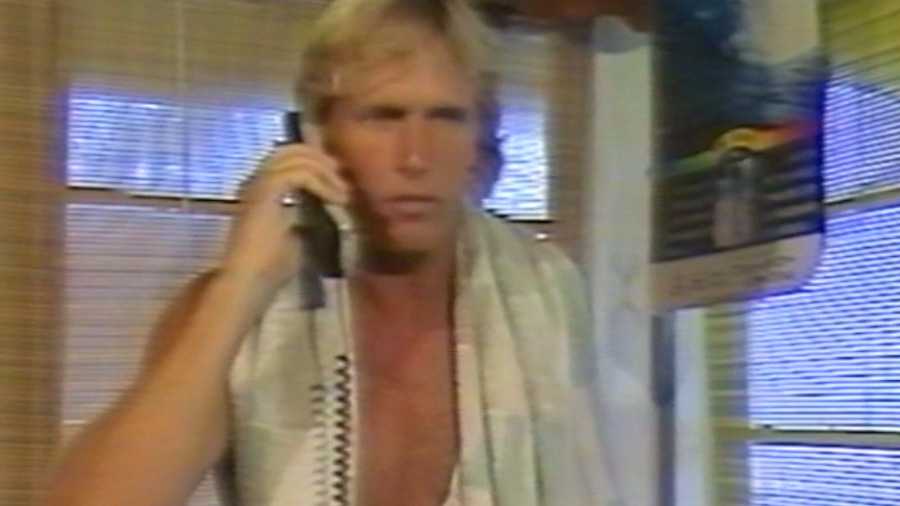
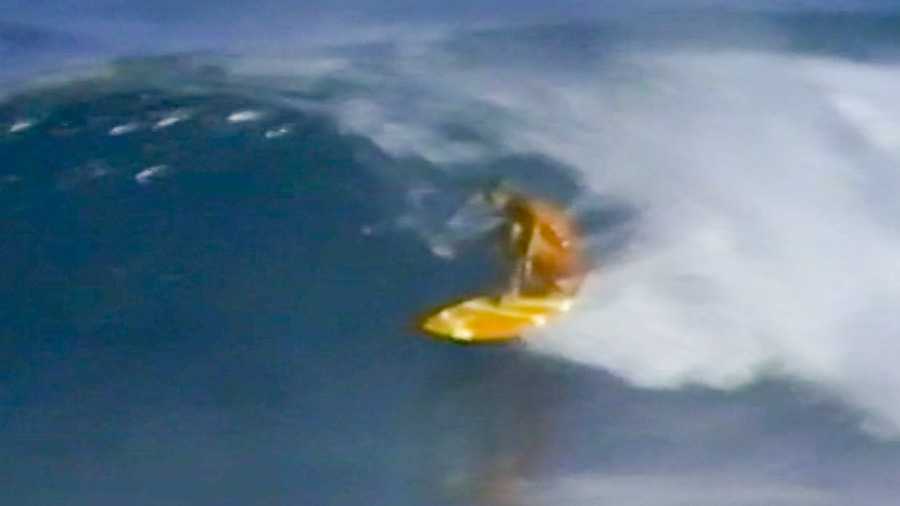
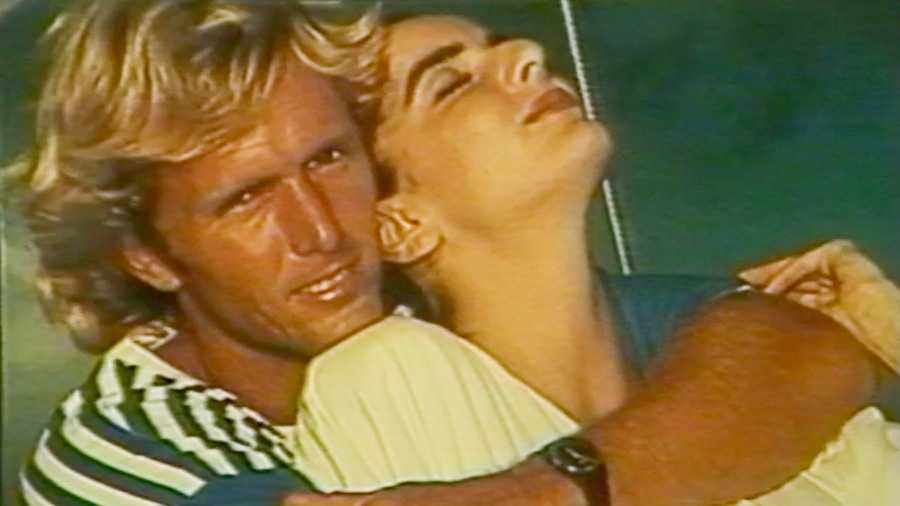
Surf photographer Warren Bolster later said he was the person who gave Cooke the idea to ride Kaena Point, and that sounds right. If Warren didn't have three or four projects in the works at a given time his manic energy would double-back and turn on him. But I'm also sure that it was Ace who pumped the Kaena project into a bigger multi-front media undertaking, because where Bolster just wanted to stay busy, Cooke wanted stardom and, hopefully, a big fame-generated payday.
Which brings us to Ace Cool: in Search of the Biggest Wave, a 30-minute straight-to-VHS movie, written-produced-funded by Cooke himself, part documentary, part dramatization, and there is just no way to overstate how odd and funny this DIY movie is. It almost feels cruel to point out the humorous bits, none of which are meant to be taken as such, but you can't watch Biggest Wave and not be amazed at the scripted set pieces, which come one after the other. Ace and his girlfriend arguing with the conviction of on-stage middle school students about his surfing dreams. Ace, with his plush wavy-blond mullet, meeting with a promo man who talks about getting him on Johnny Carson. Champagne brunch with three haole women of a certain age and means, and maybe there is a gigolo vibe here, maybe not. Most tellingly, at Ala Wai Boat Harbor one sunny afternoon, we see Ace in a boxy silver-gray Miami Vice suit, stepping onto a yacht to speak with two criminal-looking "investors" who talk to each other and say things like "Ace Cool is going to be a big star," and "he's going to be seen in the best clothes, in the best places, with the best people," and that his upcoming career in TV, film, and modeling, is "going to pay big."
All scripted, every word. By Cooke.
So laugh away. I did.
But there are moments where Biggest Wave veers from its accidental Spinal Tap rhythm and bounce.
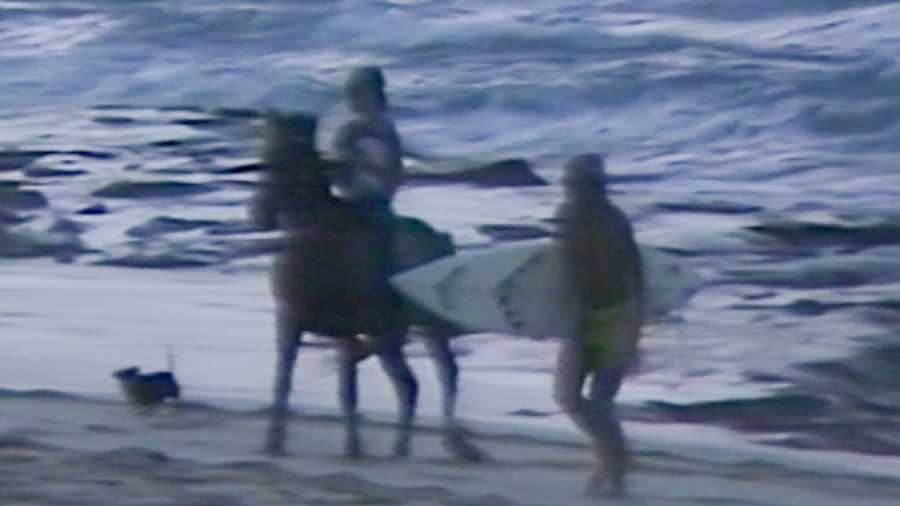
At one point, Cooke exits the water at dusk, board under his arm, and is met by a young girl on horseback. "Hi, Ace," she says. "How were the waves?" "It was a pretty good day," Cooke answers, and there is something in the way he says it that makes you think that there are days in his life that are not so good. Or maybe that's just because I happen to know Cooke had long since blown through his trust fund, was coming up on 30, scrambling to make ends meet, and was often the butt of jokes on the big-wave scene. Anyway, Alec and the girl sit on the beach, and after she says "all the kids at school think you're crazy" for wanting to ride the biggest wave, the girl asks why he wants to do it. "Sometimes you have to take chances," Cooke answers. "I mean, that's what life's all about, isn't it?"
A moment passes. "I don't want you to die," the girl says. "Don't worry, I won't," Cooke replies, and for me it's like he closed his eyes and threw a sky-hook from three courts over and swished it, the scene is quiet and sweet and sincere. I wonder if in the end what Alec Cooke really wanted, even if he didn't know it himself, was not big-wave stardom but a houseful of kids.
To wrap things up: Cooke and Bolster did a photo shoot at Kaena, in 1984, but not at full size, which is probably why they were both so keen a few months later to launch a helter-skelter airstrike on a huge afternoon at a break that was either Third Reef Pipeline or Outside Log Cabins. Cooke jumped into the water from a helicopter, paddled into the lineup, and after an hour or so speared a huge clean right. Bolster shot the whole thing, and one of his photos was made into a postcard with THE BIGGEST WAVE captioned along the bottom, and for 15 years it was a bestseller in Hawaii.
That was as famous as Cooke got. And it earned him almost nothing.
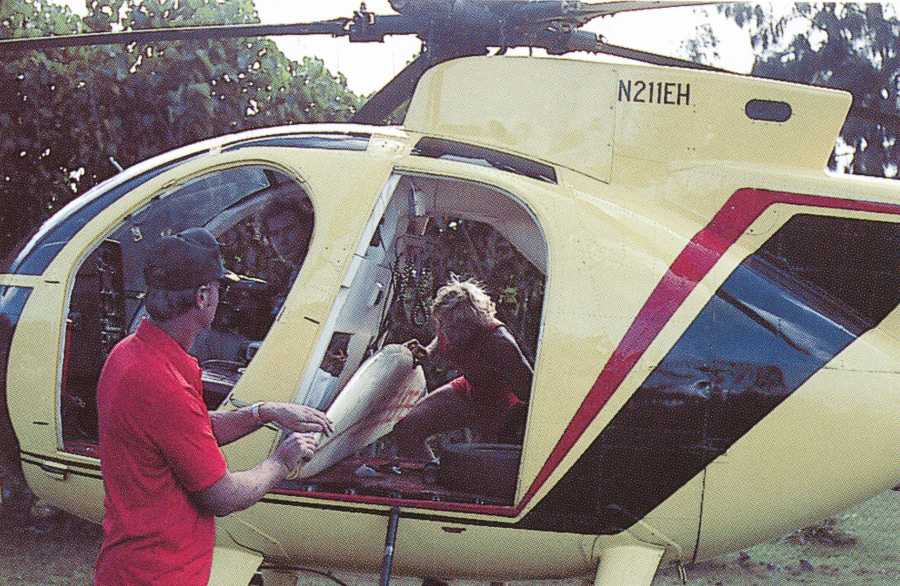
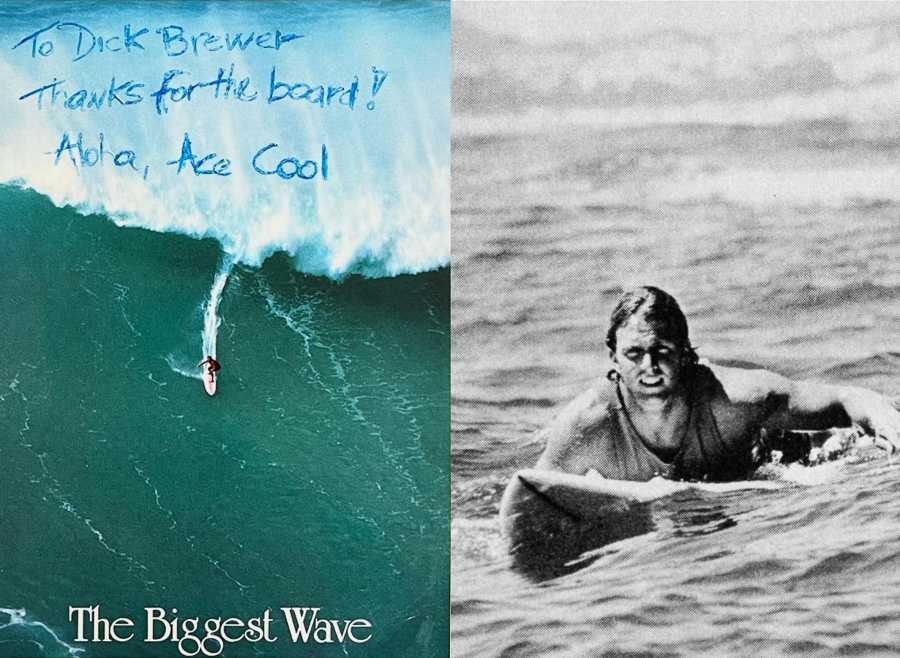
In 1987, Cooke was arrested on cocaine distribution charges. He pled down, and was sentenced to a year in prison. It didn't occur to me until this week that Biggest Wave was, in a way, responsible for the drug bust, and explains why the film was filmed and edited in '85–'86 but not released until '89. Cooke was a hustler and a talker, not a drug dealer. Or as Bolster put it, Alec could be "abrasive as a boardwalk barker," but was just as often more like "a friendly puppy that you have to constantly push off your leg." I'm guessing that, in Alec's mind, Biggest Wave was his ticket to stardom, and if he had to sell drugs to get the movie finished, so be it. He got caught, did his time, and somehow got the movie finished and put into distribution—and nobody cared. Cooke was still out there, every swell, riding big waves, but the sport had moved on. His name wasn't on the 32-man invite list for the upcoming Quiksilver-Eddie contest. It wasn't even on the 20-man alternate list.
If it hurt, he didn't show it. In a 2001 interview, Cooke referred to himself as the "Big Kahuna," and bragged that Biggest Wave had been shown weekly on a Latin American TV station for two years running: "The people in Brazil could not get enough of Ace Cool!" I think he believed it, too.
Alec Cooke took his last big chance in 2015, age 59, paddling out at dusk to night-surf Waimea Bay, something he'd been doing to get away from the crowds. His board was found the next day. Cooke himself, maybe, was once again out at Kaena Point, hoping to level up.
Thanks for reading, and see you next week.
Matt
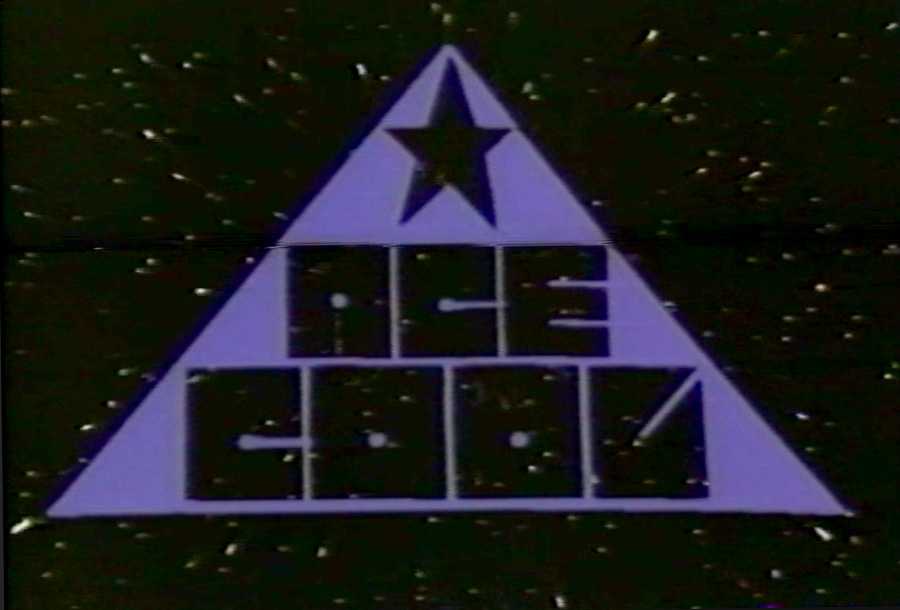
[Photo grid, clockwise from top left: James Coburn in "Duck, You Sucker," 1971; Ace Cool at Waimea, photo by Sato; missionary and Big Five businessman Amos Cooke; Cool getting airlifted from Waimea Bay in 1985, photo by Darrell Jones; title card for "In Search of the Biggest Wave"; Cool ready to jump from a helicopter to an outer reef lineup, 1985, photo by Warren Bolster. Four shots from Biggest Wave. Bottom three images from Warren Bolster.]